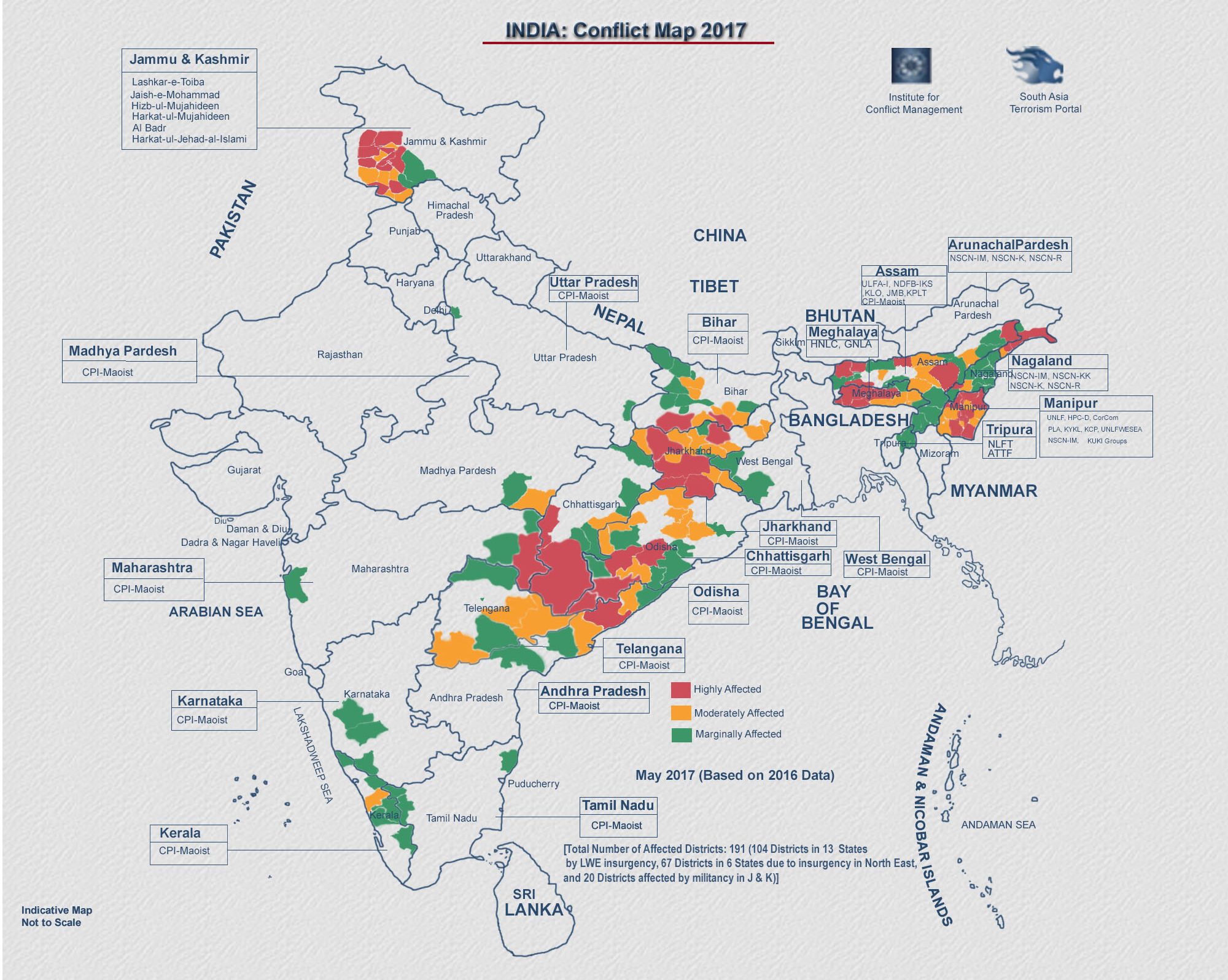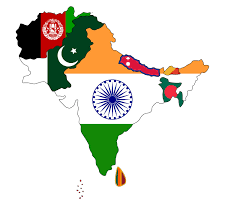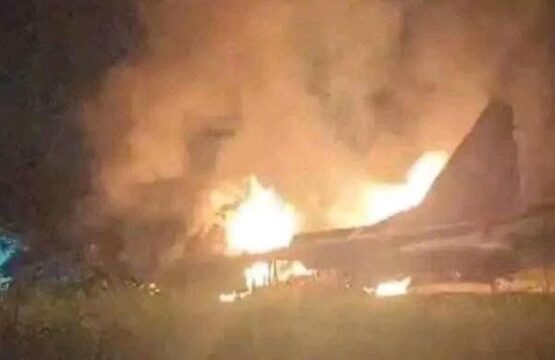South Asia is a sub-region in the south of Asia. This region is home to one of the oldest civilizations in the world, i.e., the Indus Civilization. It is a militarized region with a unique strategic buildup from the rest of the world.
Inside Asia, South Asia is the region with the highest geopolitical significance. It is one of the world’s most populated regions, comprising almost 25 percent of its population, around 1.99 billion. This is one of the most crisis-prone regions in the world, with several disputes, including territorial and border conflicts, terrorist attacks, and interstate militarization.
Conflicts People suffer from food shortages, water crises, and health issues. South Asia is enriched with several natural resources, such as metals, waterways, minerals, energy sources, fertile land, etc. This diverse region has three whale economies: India, Pakistan, and Bangladesh, surrounded by the smaller ones, Bhutan, Nepal, and Sri Lanka. The GDP of the South Asian region is $4.08 trillion, with a per capita income of $217.77.
This is a region with an immense security construct. The region’s active military strength of six significant countries is about 4,922,000. South Asia lacks integration, harmony, and a sense of collectiveness, as it is home to several of the world’s key disputes and rivalries.
In the current world, regional integration and cooperation have been essential and prominent in international relations. Regionalism is a crucial ingredient in enhancing economic and social advancement and development by focusing on the harmony and integration of the region. It demonstrates regional social, political, economic, and cultural arrangements to ease regional connection and cooperation.
South Asian Association of Regional Cooperation
During the 1980s, the former President of Bangladesh, Zia Ur Rehman, gave the idea of South Asia’s regional cooperation, considering political, social, economic, and security aspects. This idea was inspired by smaller states (Maldives, Bhutan, Sri Lanka, and Nepal) but was initially questioned by central states Pakistan and India due to their security issues.
In 1981, the foreign secretaries of the seven member states met in Columbia and discussed critical areas for regional cooperation. SAARC was founded on December 8, 1985, in Dhaka, Bangladesh, to address and resolve common issues among the South Asian Countries (SACs). Its headquarters are in Kathmandu, Nepal. At first, it consisted of seven states, excluding Afghanistan. But in 2005, Afghanistan first requested to join the organization and formally applied to acquire membership. Afghanistan joine the cooperation in 2007 at the 13th summit of SAARC. So now, there are eight member states of SAARC: Afghanistan, Bangladesh, Bhutan, India, Nepal, the Maldives, Pakistan, and Sri Lanka.
Furthermore, nine members have observer status: Australia, Burma, China, the European Union (EU), Iran, Japan, Mauritius, South Korea, and the United States (US). This is perhaps the only organization with more observers than its members (Madhur, 2023).
China has raised the demand to get upgraded to ‘dialogue partner’ at first and later to full membership, which India declined. The SAARC observer states participate in the opening and closing of the summits. The initial meeting was held in Dhaka, Bangladesh, in 1985, where the SAARC charter was signed. In all these years since 1985, only eighteen (18) SAARC summits have been held, and the last one took place in Kathmandu in 2015.
This organization was formed owing to the economic, political, and internal situation of South Asian states, which might have urged them to opt for such regional cooperation. The formation of SAARC marked the foundation of South Asia as a regional entity. The primary purpose behind the concept of SAARC was to enhance and encourage socio-economic and socio-political interaction among its member states.
The South Asian Association of Regional Cooperation has assisted its member states in achieving sustenance and economic growth through the mobilization of assets and resources on the one hand. On the other side, political and economic conflicts have retarded regional cooperation in one way or another.

SAARC Achievements
As SAARC was meant to boost coordination and cooperation and increase cultural, regional, and economic growth among the members of SAARC as well as on a global level, since 1985, the level of cooperation among SAARC member states has increased. This cooperation has earned several achievements: the South Asia Women’s Centre, the South Asia Olympic Council (South Asian Games), the South Asia Foundation, the South Asia Cooperative Program, the SAARC Writers and Literature Program, the Agreement on Judicial Cooperation on Counter-Terrorism, the Telemedicine Network, the SAARC International College in Bangladesh, and the South Asian University in New Delhi.
Along with all these, there have been several attainments in the field of science and technology that can be enlisted as bio-fertilizers, solar energy, electronics and molecular biology, biomass gasification, low-cost housing, shrimp hatcheries, pollution control and wastewater recycling, photovoltaic, pesticides, renewable energy resources, post-harvest and development of food technology, instrumentation, cultivation and processing of atomic plants, telecommunication, maintenance and calibration, weather forecast, etc.
Cooperation based on economy and trade is one of the critical components of the success of any regional or international organization, as well as the development of that region. SAARC members discussed the Preferential Trade Area during the 1990s in the form of what was known as the SAARC Free Trade Area (SAFTA). Though the drives taken for free trade faced a lot of hurdles, one can’t disagree that SAARC member states are heading towards regional growth and cooperation following their plans.
Behind SAARC’s Slow Pace
The organization has stepped into the fourth decade of its formation and still needs to reach and achieve its goals. Many gaps did not allow the establishment of good economic ties inside the South Asian region, even with the formation of SAARC.
SAARC majorly failed to achieve regional integration in South Asia because of multiple reasons, such as lack of resources, heterogeneity of the region, structural inadequacies of the organization (SAARC), state-centric socio-political construct, the role of global powers, India’s hegemony in the area, and unresolved core issues (which majorly act as the biggest hindrance). South Asia’s security condition and political background make it the world’s least integrated region. For instance, India’s policy of isolating Pakistan, and for this objective, India is using SAARC’s platform.
Further, India launched the SAARC satellite, which marginalized Pakistan, due to which Pakistan expressed a desire not to be part of this at all. Pakistan’s Foreign Office spokesperson elaborated that India wasn’t willing to collaborate, so now Pakistan won’t support this project as a regional one. Pakistan was ready to share its expertise and knowledge from having an advanced-level space program, but India’s step caused Pakistan to opt-out. India is involved in most of these disputes.

Pakistan-India’s conflicts over regional security, Hindu Muslims riots, terrorism, three wars have already fought on the disputed territory 1947, 1965 and 1971, India-Bangladesh conflicts over borders insurgencies, India-Sri Lanka disputes over Tamil ethnicity and India-Nepal discord over cross national migration and trade and transit rights. Member countries have different political disputes and lack trust.
The sense of uncertainty compelled two major regional players i.e., Pakistan & India to acquire nuclear tech and thus expending a handsome amount on defense. The ongoing nuclear arms-race in the region is emphasizing the need of cooperation and integration. Other than arms conflict the region has different issues in common, poverty, terrorism, unemployment, climate change, these are the matters that should be prioritize instead of the arms race.
Also Read: Turkish Foreign Minister set for DC concerning Gaza
Future Prospects
SAARC is still a helpful and valuable forum in the region. China’s demand to access full membership in SAARC is a more significant challenge for India and its so-called supremacy in the region. India opposed this demand from China at the 18th.
SAARC summit in 2014 in Kathmandu, Nepal. The 19th SAARC summit was scheduled to be held in November 2016, and it was expected that Pakistan would repeat and raise Beijing’s demand. Still, India cleverly played and blocked this initiative using conventional media and information propaganda. China’s economic influence can boost the needs of SAARC, and its entry into the organization can push it forward and help the region flourish.
Trade among SACs is below potential compared to East Asia’s work, which is 35%, Europe’s 60%, and South Asia’s trade, which is only 5%. Intra-regional business, which is vital for a successful regional bloc, should be promoted. There was less possibility of war among the SACs when they became high-trade partners. Free-border trade should be announced among SACs.
People-to-people connections should be conducted and arranged to help boost goodwill among people. Inviting tourists worldwide would find it interesting that the South Asian region is interlinked through a vast landscape home to historical monuments, rivers, rich lands, plains, and hospitable people.
The former Prime Minister of India, Inder Kumar mentioned that internal conflicts and disputes are impediments to achieving peace and stability in the region. Just as Germany and France, being rivals at some point, can sort out their issues and cooperate, why not South Asia? The key to regional integration is the interdependence and common interests of nation-states.
The region’s pathways to stability and harmony rely on peacefully fixing all disputes. SAARC can achieve success when its member states show the required cooperation. The EU and ASEAN success stories show that regional organizations cannot succeed unless they manifest the will to remove hindrances to integration. Core issues (political, social, etc.) should be resolved, and collective interests should be given priority, as unresolved issues and disputes may play an obstacle to achieving regional integration.
** The opinions expressed in this article are solely those of the author and do not reflect the views or position of World Affairs Insider. The organization neither endorses nor takes responsibility for the content of this article and its accuracy.
An International Relations graduate, with a keen interest in diverse areas of IR; diplomacy, global politics & human rights.









3 responses
Very well authorised!
Masha Allah. Very articulate and vell written.fact based analysis. Keep Shinning.
Masha Allah. Very articulate and well written. Keep Shinning. All the best 👍